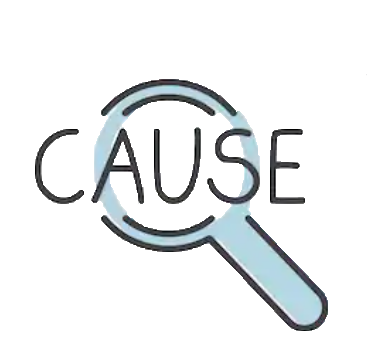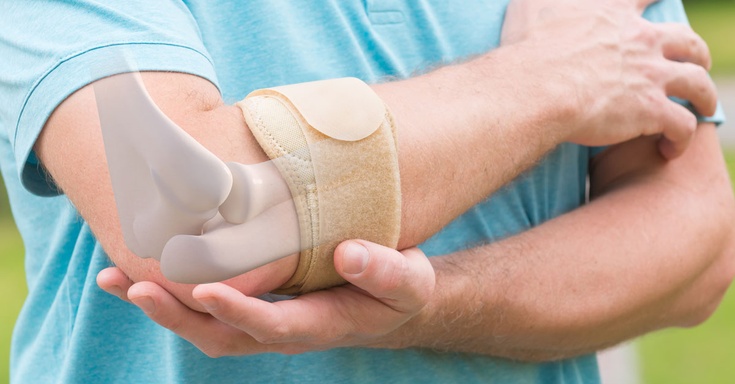Overview
Tennis elbow (lateral epicondylitis) is a painful condition that occurs when tendons in your elbow are overloaded, usually by repetitive motions of the wrist and arm.
Despite its name, athletes aren't the only people who develop tennis elbow. People whose jobs feature the types of motions that can lead to tennis elbow include plumbers, painters, carpenters and butchers.
The pain of tennis elbow occurs primarily where the tendons of your forearm muscles attach to a bony bump on the outside of your elbow. Pain can also spread into your forearm and wrist.
Rest and over-the-counter pain relievers often help relieve tennis elbow. If conservative treatments don't help or if symptoms are disabling, your doctor might suggest surgery.
Symptoms
The pain associated with tennis elbow may radiate from the outside of your elbow into your forearm and wrist. Pain and weakness may make it difficult to:
1. Shake hands or grip an object
2. Turn a doorknob
3. Hold a coffee cup

Causes
Tennis elbow is an overuse and muscle strain injury. The cause is repeated contraction of the forearm muscles that you use to straighten and raise your hand and wrist. The repeated motions and stress to the tissue may result in a series of tiny tears in the tendons that attach the forearm muscles to the bony prominence at the outside of your elbow.

Risk Factors
Factors that may increase your risk of tennis elbow include:
Age. While tennis elbow affects people of all ages, it's most common in adults between the ages of 30 and 50.
Occupation. People who have jobs that involve repetitive motions of the wrist and arm are more likely to develop tennis elbow. Examples include plumbers, painters, carpenters, butchers and cooks.
Certain sports. Participating in racket sports increases your risk of tennis elbow, especially if you employ poor stroke technique.
Physio for Tennis Elbow
How do you assess Tennis Elbow pain?
An assessment of your elbow pain starts with a conversation between you and your therapist to determine when and how the elbow pain started, what type of pain it is, the severity and factors that worsen or improve the pain. Next, your therapist will perform a physical examination, which may involve looking at your elbow's range of movement, strength, stability, and/or performing specific tests to examine different muscles, tendons, or nerves around the elbow. Using the results of both the conversation and the physical examination, your therapist will design a treatment plan to address your specific pain and the factors that led to it.
Is tennis elbow pain therapy painful?
During the treatment of tennis elbow pain, there may be some exercises and manual therapy techniques that are uncomfortable. This is normal and your feedback is an important part of tailoring the treatment protocol to you. This means that while some discomfort may occur, the exercises and manual therapy techniques employed will be modified based on your feedback so that they keep you on track to see week over week improvements in pain and function.
How long does therapy take for tennis elbow pain?
Therapy for tennis elbow pain depends on many factors, including the specific injury, how long you have been experiencing it, and the ability to modify or stop painful activities as part of your recovery. During your assessment, the Physiotherapist will explain the injury to you and will give you a rough estimate as to how long the therapy will take.
What are some ways to prevent tennis elbow pain?
Tennis elbow pain can be prevented through a few simple steps. First, it is important to keep healthy and active, including some form of resistance training 2-3 times per week. This helps ensure that the muscles around your elbow are strong and resilient. Next, when doing activities that are intense or repetitive that involve the elbow, it is good to do a warm-up. Care should be taken when performing repetitive tasks so that you vary how you perform the task, take plenty of rest breaks, and do not do too much too soon. Finally, it is important to perform some self care, such as stretching, self-massage, or soft tissue release, especially after new or repetitive tasks, to help your body recover.
Is heat or cold better for tennis elbow?
For sudden onset elbow tendonitis, use of cold for the first 3-5 days is ideal. This is because it helps limit the swelling and inflammation in the area, which can contribute to pain. Ice can also be used after the first 5 days for pain relief. However, after the first 5 days of a sudden onset tendonitis, or for tendinopathies that have been painful over a longer period, heat may be better. This is because the heat increases circulation to the elbow, which aids in healing and decreases the tightness and guarding of muscles at the elbow. Despite these guidelines, more and more research is showing that when it comes down to heat vs cold, the best to use is the one that feels the best to you.


